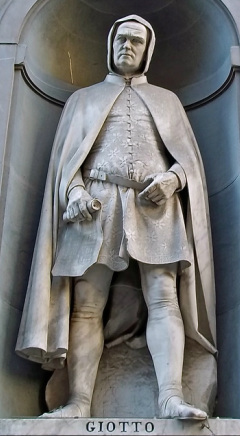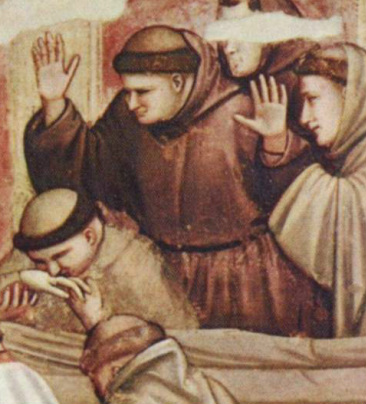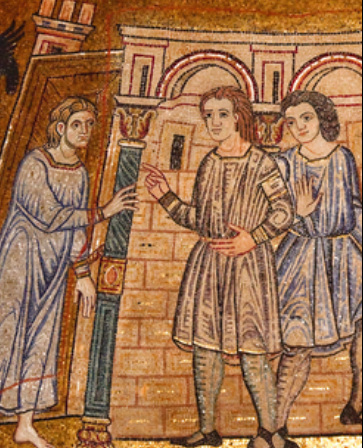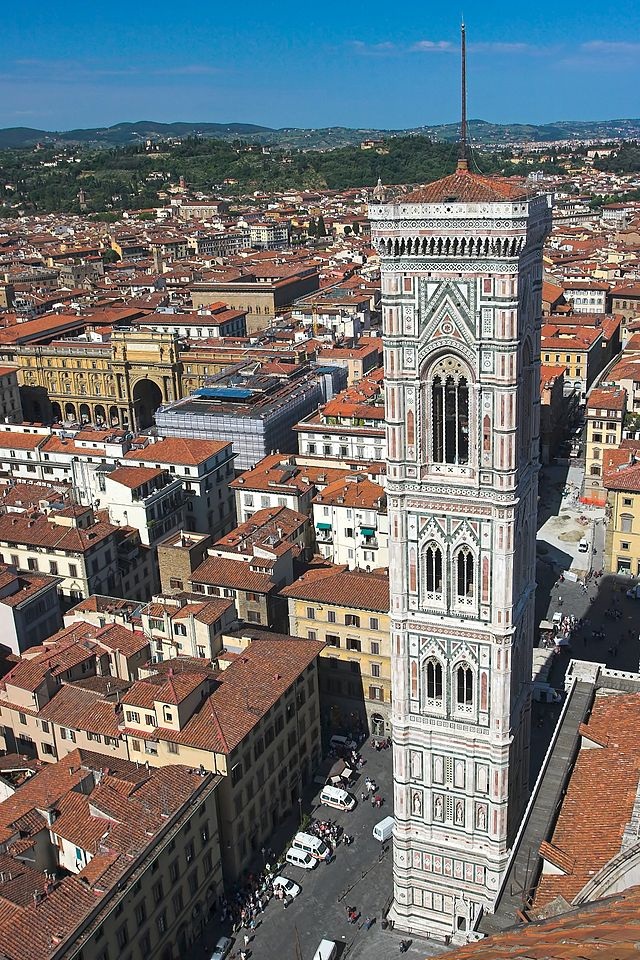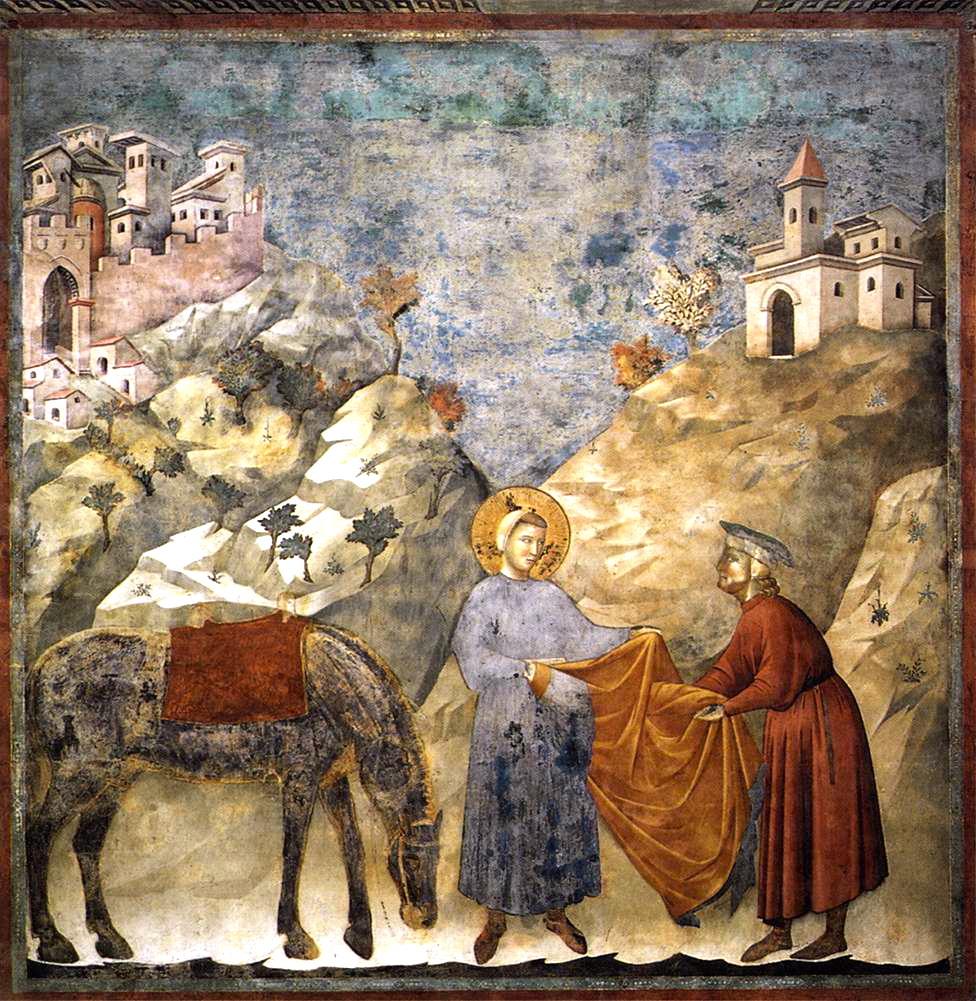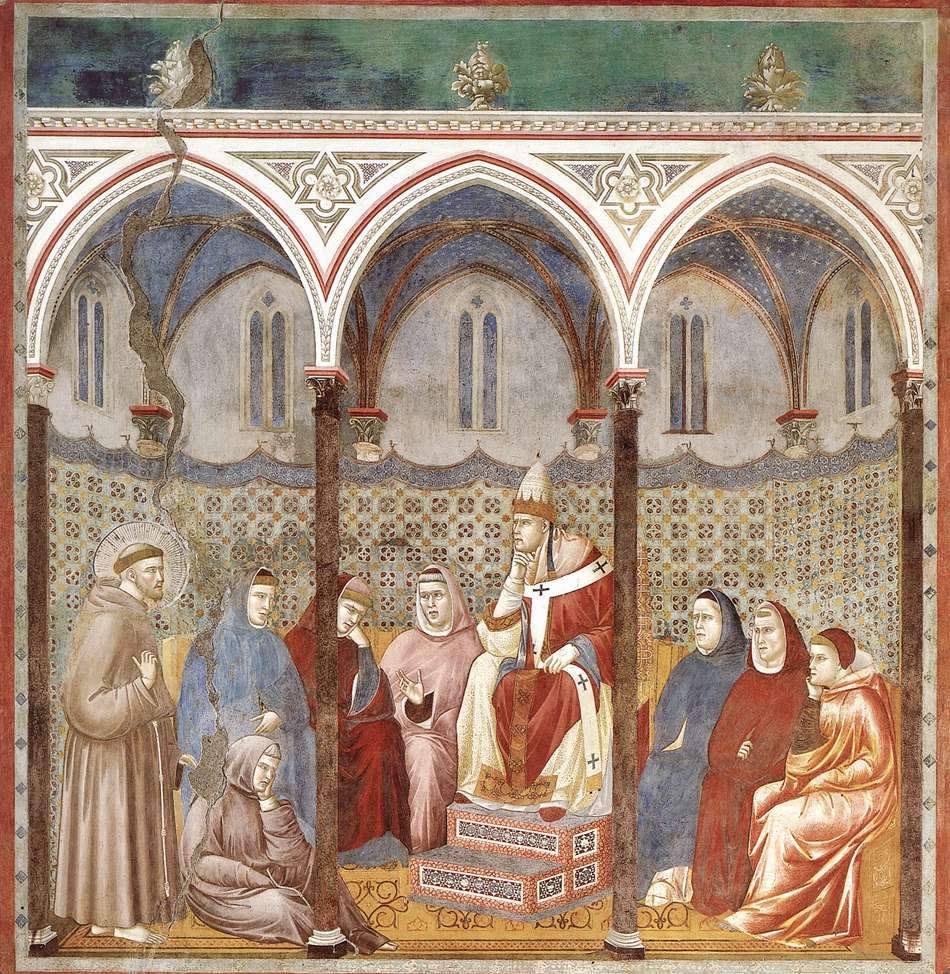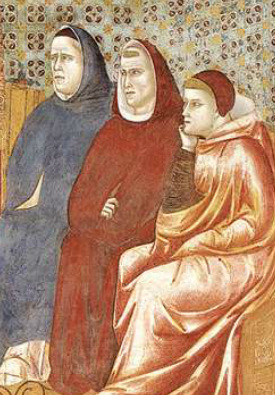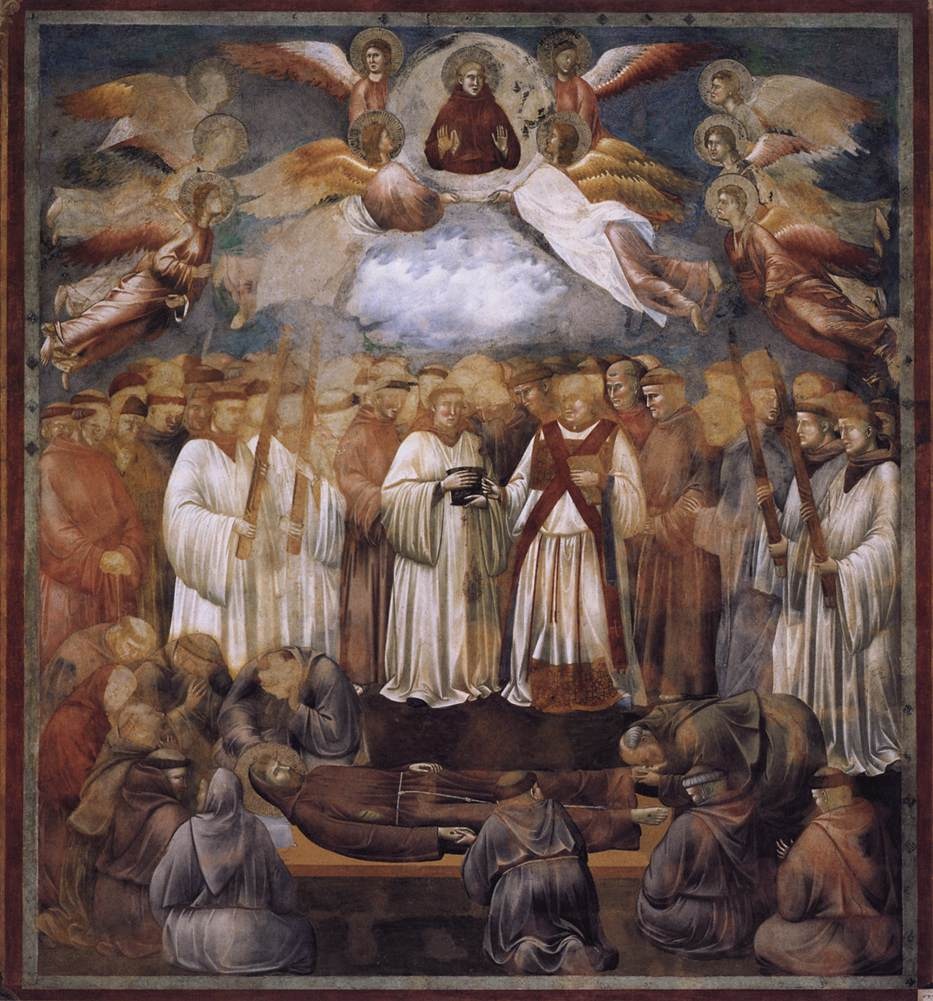Giotto
|
Good afternoon, art lovers! My name is Giotto di Bondone, but everyone just knows me as Giotto. I was born in 1266, and over the 71 years of my life, I would become known as the one of the most important artists who ever lived. Little is known about me, as I'm often overshadowed by the likes of Michelangelo and Raphael, but I'm here to show you just what "gifts" I gave to the Renaissance painters. |
|
I don't mean to brag, but without me, the works of Raphael and Michelangelo would never have achieved "masterpiece" status. In fact, my own frescos (a type of artistic style in which paint applied directly to wet plaster) in the Peruzzi Chapel in Florence were direct influences on the works of Michelangelo!
My style of art is very easy to distinguish: soft, roundish shapes, layers of background imagery, and, by the standards of the early 1300s, the perfection of the entire human "figure", complete with emotion and character. You can see the anguished emotions of an assortment of clergymen off to the right who bemoan the passing of St. Francis. |
|
Though I didn't know it at the time, later scholars would call me the first, in a great line, of Renaissance painters. According to one modern-day scholar, my work is:
Before me, artists had a darn-near impossible time achieving balance, space, and the illusion of "three-dimensions". Furthermore, I was exceptionally skilled at:
|
|
You all journeyed through Cosimo de' Medici's Florence, right? Well, you saw my capanile, my bell tower! That was my crowning achievement, and my final gift to Florence. My life is a bit suspect: no one knows exactly when and where I was born and when, exactly, I died. Often times, I didn't sign my artwork, so some of the pieces often attributed to me can never be declared "100% Giotto". Regardless, the impact that I had on the Renaissance cannot be forgotten. Let me know you a bit of my treasures... |
As mentioned before, I became famous for my ability to show 3-dimensions on a 2-dimensional surface. Judged by modern standards, yes, it might not be that great, but you have to start somewhere! Here are a few "artistic techniques" I gave to the world:
Artistic Technique: PERSPECTIVE and DISTANCE
|
It might seem simple, but the artistic technique known as "perspective" is simply the creation of depth and space. You see how the Pope is "higher" in the painting? That way, you know he's in the background!
And see how do you know that the three figures on the right are not side by side, but rather, arranged in a semi-circular format? Again, by painting the man in the black "higher", you know he's further away. And secondly, by painting the "legs" of the first man "in front" of the others, you know he's in the background. Ok...I know this is basic, and you're probably thinking, "Duh!", but at the time, the usage of perspective to show depth and distance was huge! |
Artistic Technique: "VANISHING POINT"
|
Ok...so here's a trick: If you were to draw "invisible, diagonal lines" from the bottom of the painting to the point where you believe the painting's "action" is drawing your attention, it might look like the painting on the right.
This technique, known as "vanishing point", utilizes the point on the horizon where parallel lines appear to meet. It's almost as if your sight starts to "float" to the top of the painting: to the clouds and to Christ. How do your eyes "know" to do this? There are a few techniques I use:
|
The point of using a "vanishing point" is to show perspective, yes, but also to tell your eyes where to look, in this case, on Heaven and Christ!
Artistic Technique: CONTRAST
Put simply, "contrast" is the "balance" of light and dark. But it's much more than that:
- "Light colors" usually illustrate "goodness" or "purity". In this case, the nuns are exiting the church, which shown in white, suggest that they are pure and holy.
- "Dark colors" suggest "background". Therefore, it's not surprising that your mind recognizes the church as "foreground" and the mountains and trees as "background".
Artistic Technique: EMOTION
|
And lastly, we arrive at my most "important" artistic contribution: the conveyance of emotion. I was not the first artist to show emotion, but rather the subtleties of emotion! As we know, humans are not confined simply to the emotions of love, hate, activity and/or passivity; there are millions of emotions that run the gauntlet between "0 and 100".
Examine the friar on the right side of painting inlay on the left. As he beholds the dead body of St. Francis, look into his eyes. Look at his mouth. Look at his clasped hands. What emotions are conveyed? Regardless of what you think, it's not simply "love" and/or "sadness" |
Again, I want to restate: to the untrained eye, my artistic techniques may appear pedestrian, but you have to look further. Have you ever heard of William Dawes? He was the one who actually rode further and into riskier territory than Paul Revere, though Revere is remembered for alerting the Bostonians that the British were coming. Have you ever heard of Michael Collins? He was the one in the space pod that orbited the Moon while Neil Armstrong and Buzz Aldren hopped around on the lunar surface. Without Collins to pick them up, we would never have celebrated "one giant step for mankind"!
You have to know your history: without me, quite frankly, there is no Michelangelo, no Raphael, no Caravaggio. I gave rise to all of them, and truly, the Renaissance should thank me more!
You have to know your history: without me, quite frankly, there is no Michelangelo, no Raphael, no Caravaggio. I gave rise to all of them, and truly, the Renaissance should thank me more!
I hope you enjoyed your time with me. Click on the link below to return to the "Leaders of Men" page.
